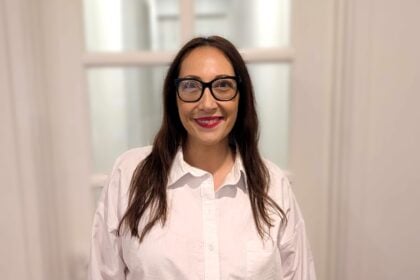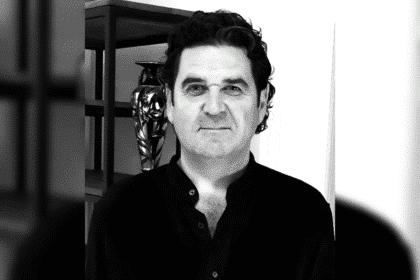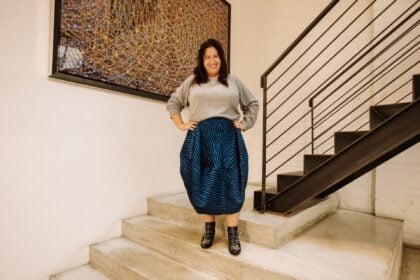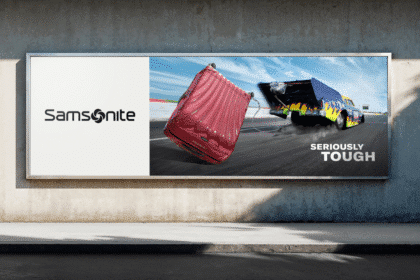On the eve of Tourism Australia’s most robust campaign since 2016, and arguably its most important ever, Australia’s peak tourism body’s CMO Susan Coghill sat down with B&T’s editor-in-chief David Hovenden to unpack the rigour that went behind the new Come and Say G’day effort.
The great thing about all Tourism Australia campaigns is that they are immediately critiqued by the entire nation. Indeed, if it weren’t for Australian’s ardour about the peak tourism body’s work we might never had heard of Scottie from Marketing. From Lara Bingle’s much maligned Where the Bloody Hell Are You through to the lauded and free work from Paul Hogan OG Come and say G’day, Australian’s have been deeply obsessed with how we trey and entice the rest of the world to pay us a visit.
Ultimately, what Australian’s think of the campaign is of little real importance. Rather whether we can see our visitation numbers from high-spending markets is all that matters.
As I sit in Tourism Australia’s temporary offices’ boardroom the Friday before they all head to New York to make Australia’s great pitch to the world, the most obvious thing is that the room has been turned into a ‘war room’. Campaign flows, schedules and activations line three of the rooms four walls. A lot of work and thought has clearly gone into this campaign. Australia’s tax payers may not be happy with the outcome, but they can’t accuse the campaign of being flippantly constructed.
In 2020 as Tourism Australia faced into the pandemic, it had four streams of work to focus on. Pivoting to domestic was the first and most urgent of these. Of course, each state and territory in Australia has its own tourist board attracting people to their state, so rather than duplicating effort, Tourism Australia looked to where there would be market failure.
“We focused on how we get domestic travellers to travel like our international travellers do when they visit. It’s human nature when you travel locally, you travel in a slightly different way,” explains Coghill.
“You probably spend less, you do less, you don’t go as far and so on. We were encouraging Australians to go farther, take those epic trips, pay for experiences … You’ll spend the 30 euros to get a photo with the Centurion at the Colosseum, for example, but when you’re closer to home, you just don’t do those things. There’s a tendency to flop and drop. That was the backbone of the domestic campaign [to reverse that bahaviour] and having talent like Hamish and Zoey was wonderful,” she said.
It was perfectly designed for the domestic market. And, in fact, that campaign was the only Effies winner in two years in travel and tourism.
Apart from the domestic emergency, Tourism Australia also worked on keeping the dream alive overseas so people could at least hope they’d one day come to Australia.
However, in many ways, the most important thing Tourism Australia did during the pandemic was extensive foundational research. “We wanted to make sure that we had the right data and insights to understand our consumers around the world. We wanted to bring some rigour to how we do our strategic planning, we borrowed frameworks from other categories. If you think about how consumer packaged goods has had a 100-year history plus of brand management, there’s real clear rules and laws of growth, if you will, that the the big brands know how to pull in and leverage to grow the brands.”
Don’t reinvent the wheel
So TA looked at how FMCGs research. How they measure growth. And then applied those same methodologies to tourism. Full funnel analysis, competitor analysis. Really understanding who’s getting the business at what point. Where countries were getting bookings? Where does Australia compare and compete?
“How do we compare on a market-by-market basis? Destination driver choice, and not just why they choose Australia, but why you choose any long-haul destination . . . how our competition compares market by market,” Coghill explains.
This isn’t the first time Tourism Australia has put good research to use. In America, for example, Australia had high awareness, high consideration, but relatively low intent at that point in time. Working with Droga5, Tourism Australia created the Dundee Campaign and used the Super Bowl to basically open hearts and minds of consumers, but also used a fully integrated campaign to measure the conversion. So impressive was it, Professor Mark Ritson broke it down.
Off the back of this research, the fourth piece of work Tourism Australia did during Covid was develop a new campaign that answered the post bushfire and (hopefully) post pandemic world. How did Australia reinsert itself in the hearts and minds of overseas consumers?
And this all came about in a moment of extreme competition. There’s fewer travellers to fight over for a start. People are staying closer to home which is a challenge for Australia as a long-haul destination. Airline capacity hasn’t rebounded fully yet. And while there are still concerns around Covid, it has slightly pulled back and it’s a little more about what might happen if there’s a recession. “There’s been a flip from health to wealth concerns” says Coghill.
“There’s more competition for us for that high-yielding traveller that we target than ever. If the pandemic did anything for tourism, it really woke up countries around the world to the value of tourism. So, you’ve seen countries go in and invest more in national tourism bodies, getting bigger budgets, but also being more creative than they ever have been.”
The fundamental job for Tourism Australia remains the same: being top of mind in consideration. “Human brains are lazy. They will shorthand things. So making sure that were top of mind, that we’re the top two or three destinations is really important.”
How are we going to meet the moment?
This is Tourism Australia’s first proper global campaign since 2016? Dundee was for the US, Matesong was for the UK.
“It does mean that we’re telling our story in a slightly different way. When you go with one country, you can go deep on that shared cultural context, but we felt that when the borders were opening, when travel is recovering, it’s important that we put our arms around the whole world welcoming them,” says Coghill.
In a typical year pre-crisis, TA would be doing brand activity in three or four markets at most. And in some years like with Dundee or Matesong, it was decided by TA go heavy in one market at the expense of others. This year, TA has been granted enough money to do proper brand marketing in nine markets.
October is an interesting sweet spot for Western and Eastern markets. For Western markets, it’s good priming time in the lead up to peak booking period in January (the dark, cold winter). In Asian markets, it’s good in the lead up to planning trips for Chinese New Year and other New Year holidays across the region.
“Consistent year-round activity is about making sure we win in consideration. And then of course, while this is a brand campaign, we don’t transact, so we have to make sure that we bring on amazing conversion partners: travel agents, online travel agents, airline partners.
We have thought through the customer journey all the way. We talked about brand activity across all these markets,” says Coghill.
Tomorrow B&T will delve into the mechanics of the campaign itself. Stay tuned.








